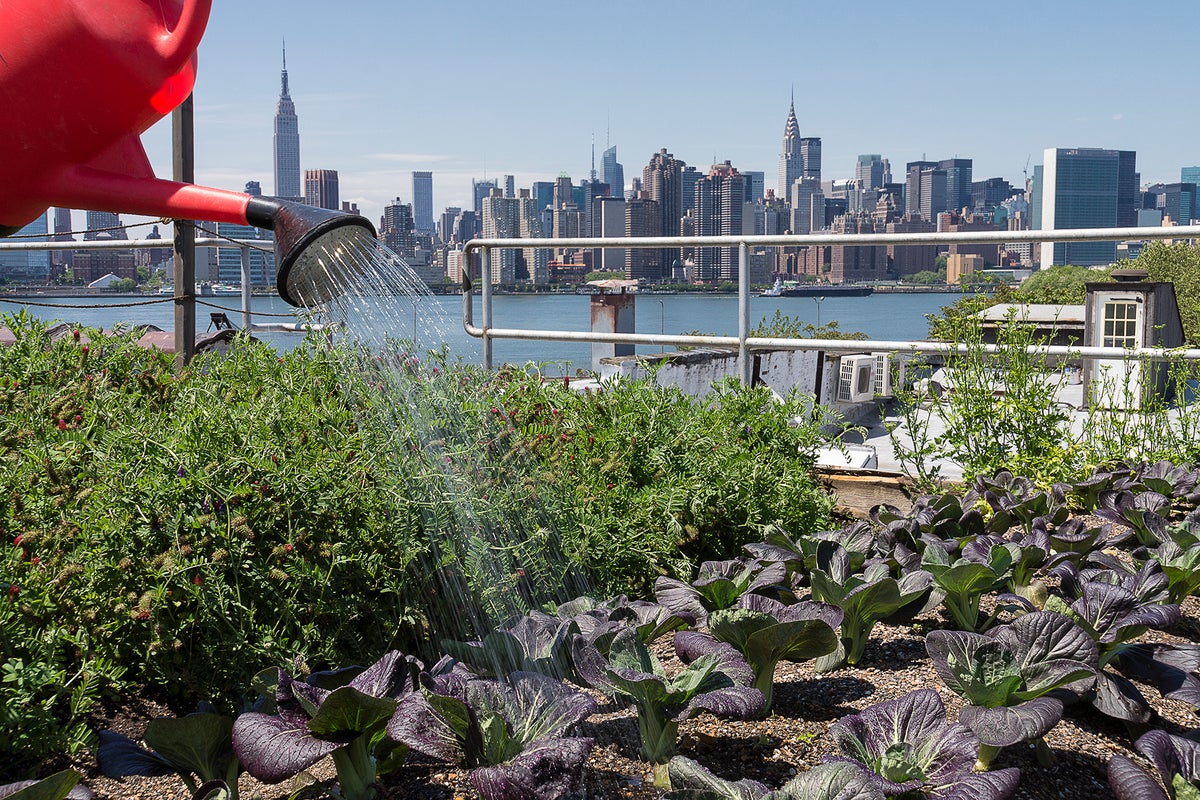6 Simple Techniques For City Blooming
6 Simple Techniques For City Blooming
Blog Article
6 Easy Facts About City Blooming Explained
Table of ContentsThe Ultimate Guide To City BloomingExamine This Report on City BloomingWhat Does City Blooming Mean?Not known Incorrect Statements About City Blooming The Ultimate Guide To City Blooming
Interested in growing food available for sale in the City of Chicago? Thinking concerning starting an area yard? Adjustments to the Chicago Zoning Regulation enable agricultural usages like community gardens and urban farms in numerous components of the city. Below is a checklist of regularly asked questions pertaining to the guidelines and guidelines that cultivators should think about when planning a metropolitan agriculture project.
The zoning modification does not change any type of various other codes handling composting, building licenses, purchasing or renting City had property, company licenses or environmental contamination. There are existing codes that manage these concerns and they stay completely result and might apply to your job. Area yards are normally had or handled by public entities, civic companies or community-based organizations and preserved by volunteers.
Urban ranches expand food that is intended to be offered, either on a not-for-profit or for-profit basis. Due to their commercial objective, urban ranches require a business certificate.
Getting My City Blooming To Work
Composting is permitted yet just for plant product that is generated and utilized on website. The quantity of compost product can not exceed 25 cubic lawns at any given time according to the requirements in 7-28-715 of the City's Municipal Code. Yes. Due to the fact that the soil at a lot of brand-new yard sites requires modifying, garden compost, dirt, timber chips, or various other materials can be gotten to construct or enhance the growing area - landscaping.

If a building authorization is required after that the hoophouse will certainly be taken into consideration an accessory structure. You can locate out more concerning the structure license requirements by getting in touch with the Division of Structures. The 25,000-square-foot size restriction is intended to prevent a single neighborhood yard from controling an offered block or diminishing the block's existing residential or business character.
The limitation does not relate to gardens found in Public Open Area (POS) districts. Can there be greater than one neighborhood garden that is 25,000 square feet on a single block? Yes. The size limit relates to individual gardens, not to specific blocks. No. Fence is not called for, nevertheless, gardens that have large car parking areas may be required to install fencing or other landscape design functions.
The Of City Blooming
B1 & B2 areas call for that all commercial use activities be carried out indoors. R districts limit commercial activity. The policies reflect the purpose and intent of the Zoning Code. Is fence needed for urban farms? Yes. Fencings might be needed, along with landscaping and screening, for sure parking lot and exterior work or storage space locations depending upon location and the certain activity taking place.
Yes. Urban farms call for structure licenses and zoning approvals before construction. Other kinds of city evaluation may be needed depending on certain frameworks, activities, dimension, landscape design, licensing, public health and stormwater administration concerns. A number of these needs are identified in the project design or permitting process, however, the candidate may be accountable to independently recognize particular licenses or permits that may be called for.
Yes. The kind of certificate is identified by what is taking place at the site. The Department of Service Matters and Customer Protection can help figure out the certain sort of service certificate that's needed. Yes. Off street auto parking is needed for many industrial jobs in Chicago. The required number of auto parking areas is based upon the variety of workers working with website and not the square video of the growing room.
Some Known Incorrect Statements About City Blooming

Yes. A city ranch can market compost material created on website, nevertheless, the operation must adhere to the guidelines in 7-28-715 of the Chicago Municipal Code. Yes. Aquaponic systems are enabled inside on metropolitan ranches in numerous zoning districts. A zoning review and building permit is required in order to mount structures or systems and an organization license is required as described above.
As much as 5 hives or nests of honey might be kept as an accessory usage. Beekeepers should register with the Illinois Department of Agriculture. For more details regarding the suggested zoning change you may speak to the Department of Housing and Economic Growth, Bureau of Preparation and Zoning at 312.744.8563.
, which takes place in rural areas at the side of suburban areas.
City Blooming - Truths
It can include a movement of natural cultivators, "foodies" and "locavores", that look for to discover this create social media networks established on a shared values of nature and community holism. These networks can develop by method of official institutional assistance, ending up being integrated right into regional town as a "transition town" activity for lasting urban growth.
The extra straight accessibility to fresh veggie, fruit, and meat products that might be become aware with metropolitan farming can enhance food safety and security and food security while lowering food miles, causing reduced greenhouse gas emissions, consequently adding to environment change mitigation. Some of the first proof of city agriculture comes from Mesopotamia.
Report this page